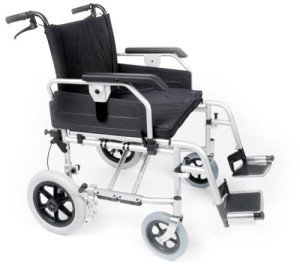Unexpected Business Strategies For Business That Aided Bariatric Wheelchair 24 Inch Seat To Succeed

Bariatric Wheelchair Seat Width
Seat Width
Having the proper seat width is essential to wheelchair users who spend longer durations in their chairs. Too narrow a seat will trigger pressure on the hips and thighs which might cause sores or pressure points. Having too wide a seat can likewise make it hard for the user to reach the hand rims to propel themselves or maneuver in little areas.
To determine the proper seat width an individual would rest on a chair generally and have their measurement taken across their lap at the widest point which is normally their hips. A wheelchair measuring tape can be used to determine this, however a lawn stick is chosen as it prevents people from covering the tape around their hips which would give an incorrect outcome.
The basic wheelchair seat width is 16" (narrow adult), 18" (basic adult), and 20" (large adult). For bariatric patients, a 24" seat is readily available. This durable extra large bariatric wheelchair from Medline features swing-away footrests, a carbon steel frame with rust- and chip-resistant chrome plating, and easy-to-clean vinyl upholstery. It has a weight capacity of 500 pounds.
Seat Depth
Generally, the seat depth of a bariatric wheelchair was included 2" to the measurement taken at the user's best point (typically their hips). This was meant to accommodate additional layers of clothing that may be worn during cold weather. Nevertheless, this practice is becoming less common as wheelchair users are able to spend more time inside and are not using long coats. This makes the seat depth of a chair less essential when picking a bariatric wheelchair. Nevertheless, it is still important to select a choice that uses sufficient support for larger users.
The Medline folding extra broad bariatric manual wheelchair features a comfortable 24" seat width and a durable slide tube silver vein frame. It likewise has an adjustable axle and tool-free raising legrests.
Seat Height
When it concerns identifying the appropriate wheelchair seat width you must always measure from the user's best point which is usually their hips. You will likewise need to consider whether the user is going to be wearing a winter season coat as this might add 2" to the width needed.
When a wheelchair remains in use it ought to only be run on level surface areas with the wheel locks totally engaged. This is to avoid the chair from having the ability to move slopes that are 10 degrees or greater. It is likewise crucial to remember that any activity that might shift the center of gravity in the chair must be finished with care. This includes reaching for products that need the person to lean out of their seat or trying to stand from it.

Whenever Highly recommended Site have the chair in usage it is advised that you regularly inspect it for damage and lubricate any areas that are deemed necessary. For example, the casters must be oiled by eliminating the caster fork and utilizing a multi-purpose grease to apply to the caster stem bearings. Similarly, the foot plates can be changed by loosening up the bolt and after that moving them to the wanted position. This permits the feet to sit conveniently on the footplate and prevents any pressure points from forming. This can be extremely uneasy for the user and if left unattended, can result in pressure sores.
Weight Capacity
Bariatric wheelchairs are designed to support more weight than basic wheelchairs. This makes them stronger and much better geared up to manage falls. They are likewise typically larger and wider, making them less maneuverable in tight spaces than standard wheelchairs. They require vehicles with special ramps and lifts to fill them, along with chauffeurs who know how to best transport them from one place to the next.
When choosing a wheelchair, consider its weight capacity as it will be the main determining aspect in whether it will accommodate your traveler's needs. The weight capacity of the chair is typically listed as a static load, indicating that it indicates the amount of weight the chair can easily hold while stalling. However, some producers also list an active load that is based on a drop test and can mimic the result of someone sitting down in the chair. This might be a more reliable measurement of the weight limit, depending upon your needs.
If you plan to carry out activities that shift your center of mass in the seat (such as reaching for objects), be sure to have front casters pointed in a forward direction and wheel locks engaged so the chair will not tip over. Also, examine that casters are oiled routinely to avoid extreme wear and abrasions. The lubrication procedure involves removing the fork, separating the caster from the wheel, and greasing the caster stem bearings with premium multi-purpose grease.
